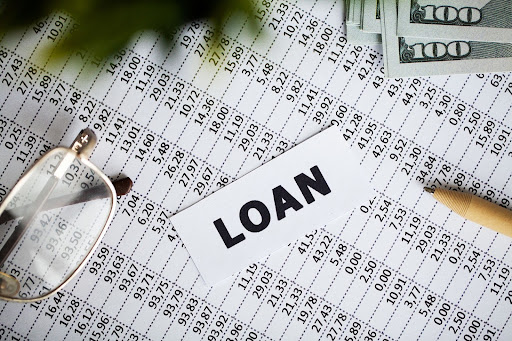For many business owners, acquiring the right equipment is one of the biggest hurdles in keeping their companies competitive and efficient. From upgrading technology to replacing heavy-duty tools, business equipment plays a vital role in day-to-day operations. But the cost of these equipment purchases often comes with large upfront costs that strain resources.
That’s where a small business loan for equipment comes in. By turning to structured equipment financing, companies can spread out the purchase cost into manageable payments, rather than draining capital all at once. This approach allows businesses to maintain healthy cash flow, preserve working capital for other priorities, and still secure the tools they need to thrive.
In today’s market, access to smart business loans tailored for equipment can make the difference between staying stagnant and moving forward. A clear roadmap not only helps you understand the financing process but also ensures you choose the right solution to match your unique business needs.
Step 1: Define Your Needs and Estimate Costs with Equipment Financing

Before exploring lenders or filling out applications, the first step is understanding exactly what you need. For small businesses, every dollar counts, so being clear about the type of business equipment you’re looking for—and why—sets the stage for smarter financing decisions.
Start by asking:
- What role will this equipment play in my business operations?
- Is it replacing outdated machinery or supporting expansion into new services?
- How critical is it for keeping my business running smoothly?
Once you’ve defined the right equipment, estimate the purchase cost as accurately as possible. Consider not only the sticker price but also other factors like installation, training, insurance, or required maintenance. For example, if you’re in the construction industry, a construction equipment purchase may also involve transportation or setup fees.
This step is where equipment financing begins to show its value. Instead of absorbing the full expense of equipment purchases at once, you can align the loan amount with what you truly need. For many business owners, this makes it easier to secure the funds without overextending their budget.
A clear, detailed estimate of costs will not only help you choose the best equipment financing options but also show potential lenders that you’ve thought through your business needs—increasing your chances of approval.
Step 2: Assess Eligibility and Prepare Your Business Equipment Profile

Before applying for business equipment loans, it’s important to understand how lenders evaluate your eligibility. Most will look closely at your credit history, annual revenue, and time in business. Strong personal credit can also help newer companies, especially when applying for an SBA-backed product or loans from traditional banks.
Part of this step involves preparing a complete business equipment financing profile. This includes outlining what equipment you need, why it’s necessary for your daily operations, and how it will improve efficiency or productivity. Showing how the financing aligns with your broader business needs can strengthen your case with a lender.
In addition to your business plan, be ready to provide:
- Financial statements that demonstrate stability and repayment ability.
- Details about the equipment purchases, including whether you’re buying new or used equipment.
- Your ability to make a down payment, if required.
For small businesses, preparing these materials ahead of time signals responsibility and lowers the risk for lenders. This not only improves your chances of approval but can also help you qualify for competitive interest rates or better loan terms.
Taking the time to assess your eligibility and organize documentation sets you up for success and ensures that when you do apply, the process is as efficient as possible.
When Do Business Loans Make Sense?
Not every purchase requires financing, but there are clear situations when business loans are the smartest path forward. For many small businesses, the ability to secure funding at the right time is what allows them to expand, upgrade, and remain competitive.
Situations Where a Loan Is Beneficial
- Large Equipment Purchases – If the price tag for business equipment is too high to cover with existing funds, an equipment loan can make ownership possible without draining resources.
- Preserving Working Capital – Even profitable companies may not want to deplete reserves. Financing equipment outright can tie up capital that’s better used for payroll, marketing, or emergencies. Choosing financing preserves working capital while still allowing access to essential assets.
- Growth and Expansion – Taking on new contracts, opening additional locations, or adding commercial vehicles often requires upfront investment. Loans ensure you can act quickly without waiting to save cash.
- Improving Efficiency – For companies in industries like manufacturing or construction, outdated equipment slows productivity. Financing helps replace machinery so daily operations remain competitive.
Why Loans Sometimes Beat Leasing
While an equipment lease offers flexibility, business equipment financing through loans may make more sense if you want to build equity, maximize tax benefits, or keep the asset long term. With ownership, the loan amount is an investment rather than an ongoing cost.
Ultimately, business owners should weigh loan options against alternatives like leasing, grants, or self-funding. If the equipment will hold value and directly support long-term growth, a loan is often the right move.
How Does Timing Affect Business Equipment Financing?
When applying for business equipment financing, timing can have a major impact on your eligibility, loan terms, and overall cost. Many small businesses make the mistake of waiting until equipment breaks down before exploring financing. By that point, urgency can limit your financing options and force you into less favorable agreements.
Business Cycle Considerations
Applying during a stable or growth period, when your business cash flow and annual revenue look healthy, increases the chance of approval and may unlock competitive interest rates. Lenders evaluate not only your credit but also the overall health of your company, so applying from a position of strength puts you in control.
Seasonal and Industry Factors
For companies in industries with peaks and valleys—like construction equipment providers or manufacturing firms—timing can determine repayment flexibility. For example, applying for equipment loans in the off-season may secure better payment options, while applying during high demand periods could speed up approvals but come with stricter payment requirements.
Economic Conditions
Broader economic shifts also affect financing. Rising interest rates, tighter lending from traditional banks, or new loan programs offered by the Small Business Administration (SBA) can change the affordability of equipment financing loans. Staying ahead of these trends helps business owners lock in favorable terms before conditions shift.
In short, planning ahead—rather than waiting until you urgently need new equipment—makes it easier to secure the funds you need on terms that align with your business needs and long-term stability.
Step 3: Explore Lenders and Cash Flow Considerations

Once you’ve defined your needs and assessed eligibility, the next step is choosing the right lender and ensuring the financing structure supports your cash flow. Not all financing sources are the same, and understanding your options can help you secure terms that align with your business operations.
Types of Lenders
- Traditional Banks and Credit Unions – Offer structured business equipment financing with lower interest rates, but often require excellent credit, strong financial statements, and longer approval timelines.
- Online Lenders and Platforms – Provide faster approval and flexible loan programs, though sometimes at the cost of higher fees or shorter loan terms.
- Small Business Administration (SBA) Loans – Backed by the government, SBA loans often come with lower down payment requirements and longer repayment schedules, making them ideal for many small businesses.
Evaluating Cash Flow Impact
Before signing an agreement, review how the loan will affect your business cash flow. Even if the loan amount and monthly payments seem manageable, you need to be confident the financing won’t disrupt your ability to cover payroll, inventory, or other operating expenses.
Pro tip: Compare multiple financing options to see how each impacts your working capital. A line of credit may provide flexibility for fluctuating funds, while fixed equipment loans offer stability with predictable payment options.
By exploring lenders carefully and planning around cash flow, business owners can avoid surprises and ensure financing contributes to growth rather than becoming a burden.
Step 4: Compare a Loan vs. an Equipment Lease

One of the biggest choices business owners face is whether to take out an equipment loan or opt for an equipment lease. Both approaches fall under the umbrella of business equipment financing, but they serve different purposes and affect your cash flow in unique ways.
Equipment Loans
With an equipment loan, the lender provides the funds for the purchase, and you make fixed payments over time. Once the loan is repaid, you fully own the business equipment. Loans are often ideal for assets that will remain useful for many years, such as construction equipment or commercial vehicles.
- Pros: Builds equity, predictable loan terms, potential tax advantages (depreciation).
- Cons: Usually requires a down payment, and you’re responsible for maintenance and repairs.
Equipment Lease
An equipment lease functions more like a rental. You make regular monthly payments to use the equipment during the lease term, but ownership typically stays with the lender unless there’s a buyout option. Leasing is useful for assets that depreciate quickly or require frequent upgrades, such as technology or professional services tools.
- Pros: Lower upfront cost, preserves working capital, flexible upgrade paths.
- Cons: No ownership unless you purchase at the end, and long-term leasing may cost more than buying.
Which is Right for You?
If your priority is long-term ownership and building value, equipment financing loans are often the better choice. If flexibility and lower upfront costs matter more, leasing may make sense. Many small businesses use a mix of both—financing durable assets through loans while leasing shorter-term or fast-changing tools.
Step 5: Understand Down Payment Requirements and Terms

When applying for equipment financing loans, many lenders require a down payment before approving the agreement. This upfront cost usually ranges from 10% to 20% of the loan amount, though it varies based on your credit, business history, and the type of equipment being purchased. For some SBA loans or specialized loan programs, requirements may be lower, which makes them appealing to small businesses.
Why Down Payments Matter
A down payment reduces the lender’s risk, showing that the business owner is committed to the investment. It also lowers the financed balance, which can lead to more favorable loan terms, reduced interest rates, and lower monthly payments. For companies purchasing new or used equipment, being prepared to put money down often improves overall approval odds.
Negotiating Terms
Some lenders and credit unions offer more flexible payment options than others. For example, a startup may negotiate a smaller down payment if they have strong business equipment financing needs and solid business credit. Others may allow seasonal or balloon payments for industries with fluctuating cash flow.
Planning Ahead
Set aside funds for a potential down payment early in your financing journey. Even if your chosen program doesn’t require it, having reserves shows stability and strengthens your application. More importantly, understanding down payment expectations ensures you don’t overcommit and can keep your business running smoothly while still securing the right equipment.
Step 6: Apply for Equipment Financing Loans with Confidence

Once you’ve prepared your financials, defined your needs, and identified the best lender, it’s time to apply for equipment financing loans. While the process can feel daunting, being proactive and organized helps you move through it with confidence.
Gather Documentation in Advance
Most lenders will ask for:
- Recent financial statements (income statement, balance sheet, cash flow statement).
- Details on the equipment purchases, including invoices, quotes, or specs.
- Proof of business credit or personal credit history.
- Business plan outlining how the equipment will improve efficiency or expand services.
Having these ready speeds up the review and may reduce the number of back-and-forth requests.
Consider Loan Programs
For small businesses, certain loan programs like SBA loans can provide more favorable loan terms, including lower fees and smaller down payment requirements. While SBA-backed loans can take longer for approval, they are often worth the effort thanks to competitive rates and stronger protections.
Submitting the Application
Many lenders allow you to apply online, which can streamline the process and shorten approval times. Be sure to review all payment requirements, potential fees, and repayment structures before finalizing your application.
Pro Tips for Confidence
- Compare multiple offers before committing to ensure you’ve chosen the best financing options.
- Double-check how the loan affects your business cash flow and working capital.
- Ask questions about fixed rate financing, variable rates, or balloon payments so you’re never surprised.
By preparing thoroughly and applying with the right lender, you’ll be better positioned to secure financing that meets your business needs and keeps your business running smoothly.
Step 7: Review Equipment Financing Options for Flexibility

Even after approval, the process isn’t over. The final step is choosing the equipment financing options that best fit your company’s goals and resources. Not all agreements are structured the same, and the differences can have long-term effects on your business operations.
Loan Options
Traditional equipment loans come with fixed loan terms and predictable payments, making them easier to plan for. Depending on the lender, you may be offered fixed rate financing or variable rates. Loans work well for business owners who want to eventually own the equipment outright and take advantage of depreciation or resale value.
Leasing Options
For businesses that need more flexibility, an equipment lease may provide the better path. Leasing requires little to no down payment, preserves working capital, and often includes more adaptable payment options. At the end of the lease term, you may be able to upgrade, renew, or purchase the right equipment at a reduced cost.
Matching Options to Your Business Needs
When reviewing offers, compare how each option affects cash flow and whether the structure aligns with your business needs. For example:
- A line of credit might be ideal if you anticipate frequent equipment purchases or upgrades.
- A long-term loan may suit companies investing in durable assets like heavy trucks or manufacturing machinery.
- Leasing may benefit those in fast-changing industries where new equipment is needed every few years.
By carefully weighing your financing options, you ensure that the structure supports growth without creating unnecessary strain on your company.
How Does Equipment Financing Work in Practice?
Understanding how equipment financing work in the real world helps demystify the process for small business owners. At its core, equipment financing is straightforward: you secure funds from a lender to cover the purchase cost of the equipment, then repay through structured payments over a set period. The equipment itself often serves as collateral, reducing risk for the lender and making approvals more accessible to small businesses compared to other forms of credit.
The Basic Process
- Apply for Financing – Submit your application with supporting details such as quotes for the business equipment, recent financial statements, and proof of business credit.
- Loan Approval and Terms – Once approved, the lender outlines the loan terms, including the loan amount, interest, fees, and repayment schedule. Some programs, like SBA loans, may also reduce down payment requirements.
- Purchase the Equipment – The lender provides the funds so you can acquire the new equipment or used equipment needed for your daily operations.
- Repayment – You make regular monthly payments until the balance is paid off. At that point, you own the asset outright.
Benefits in Practice
- Helps preserve working capital for payroll, marketing, and other operating needs.
- Provides flexible payment options and structures, including seasonal adjustments for industries like manufacturing or construction.
- Makes it easier for business owners to scale, take on new contracts, or keep their business running smoothly with reliable tools.
In short, equipment financing provides a clear path for small businesses to access the tools they need without overwhelming their budget. When done right, it balances affordability with growth—allowing companies to stay productive and competitive.
How Charter Capital Supports Business Financing Success
Securing financing is more than just filling out applications—it’s about finding the structure that truly fits your business needs. For many small businesses, navigating lenders, comparing loan terms, and managing approval requirements can feel overwhelming. That’s where Charter Capital makes a difference.
A Broker That Works for You
Unlike traditional banks that only offer their own loan programs, Charter Capital acts as a broker, giving business owners access to a wide network of lenders. This means you’re not limited to one set of requirements or rigid payment options. Instead, you can compare financing options side by side to choose the structure that best supports your business operations.
Customized Guidance
Whether you’re applying for SBA loans, exploring an equipment lease, or pursuing equipment financing loans, Charter Capital helps you understand the details—from interest rates and fees to payment requirements and approval criteria. Our team simplifies the process, ensuring you’re prepared with the right documentation and a clear strategy.
Support for Long-Term Growth
Charter Capital’s goal isn’t just to help you finance equipment today—it’s to help keep your business running smoothly tomorrow. By connecting you with competitive lenders, explaining terms clearly, and offering ongoing support, we make sure your financing not only meets immediate goals but also aligns with future growth.
With more than 40 years of experience, Charter Capital has helped thousands of companies secure the funds they need for business equipment, expansion, and stability. That expertise is what makes us a trusted partner in business financing nationwide.
Matching Financing to Your Business Needs
At Charter Capital, we’ve helped thousands of business owners navigate the complexities of financing—from down payment expectations to repayment schedules—to keep their business running smoothly. With our nationwide network of lenders, decades of experience, and commitment to tailoring solutions, we make sure you have the right plan in place to move forward with confidence.
Ready to secure the financing you need? Contact us today to explore flexible, affordable solutions that align with your business goals.

